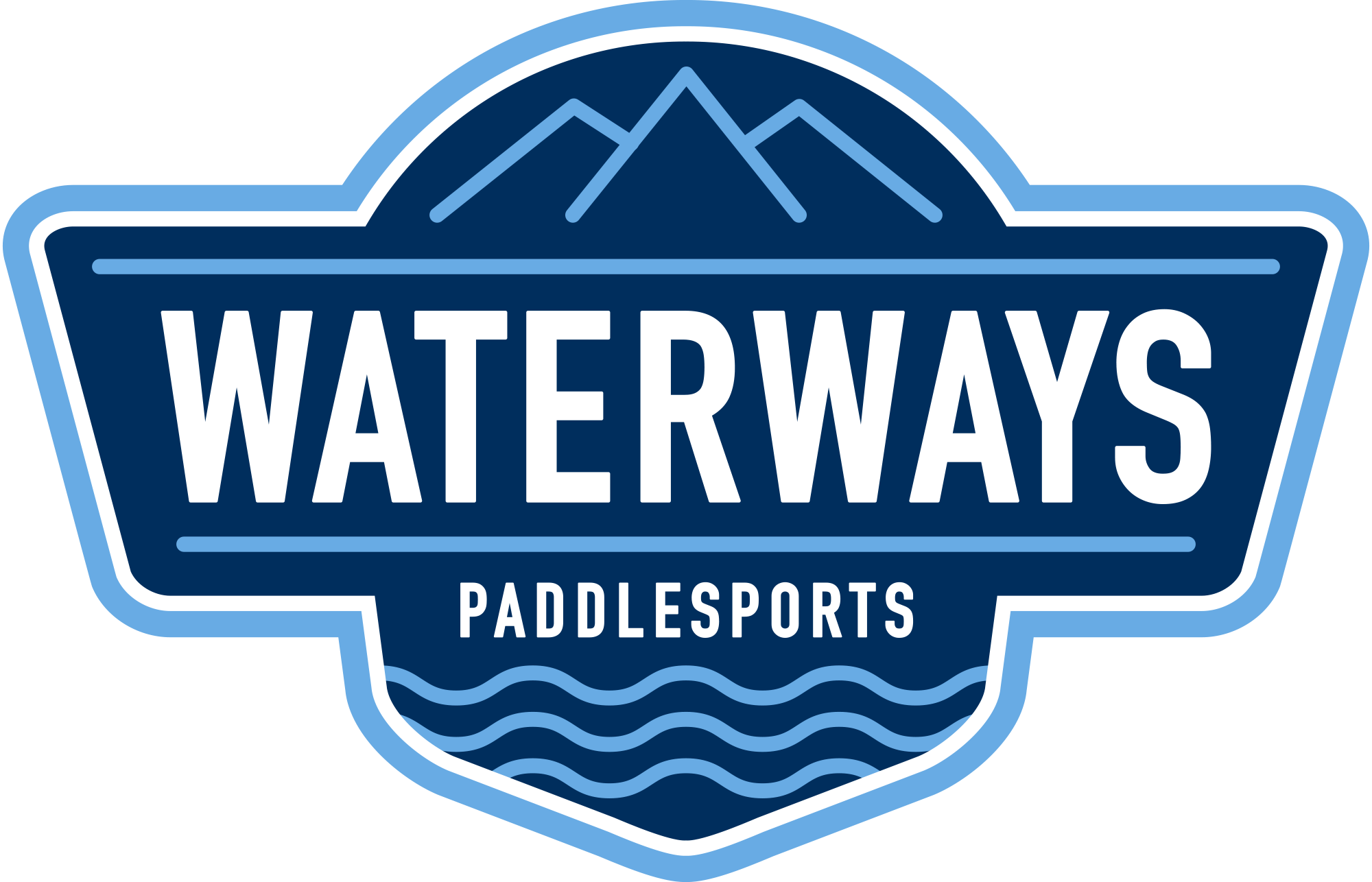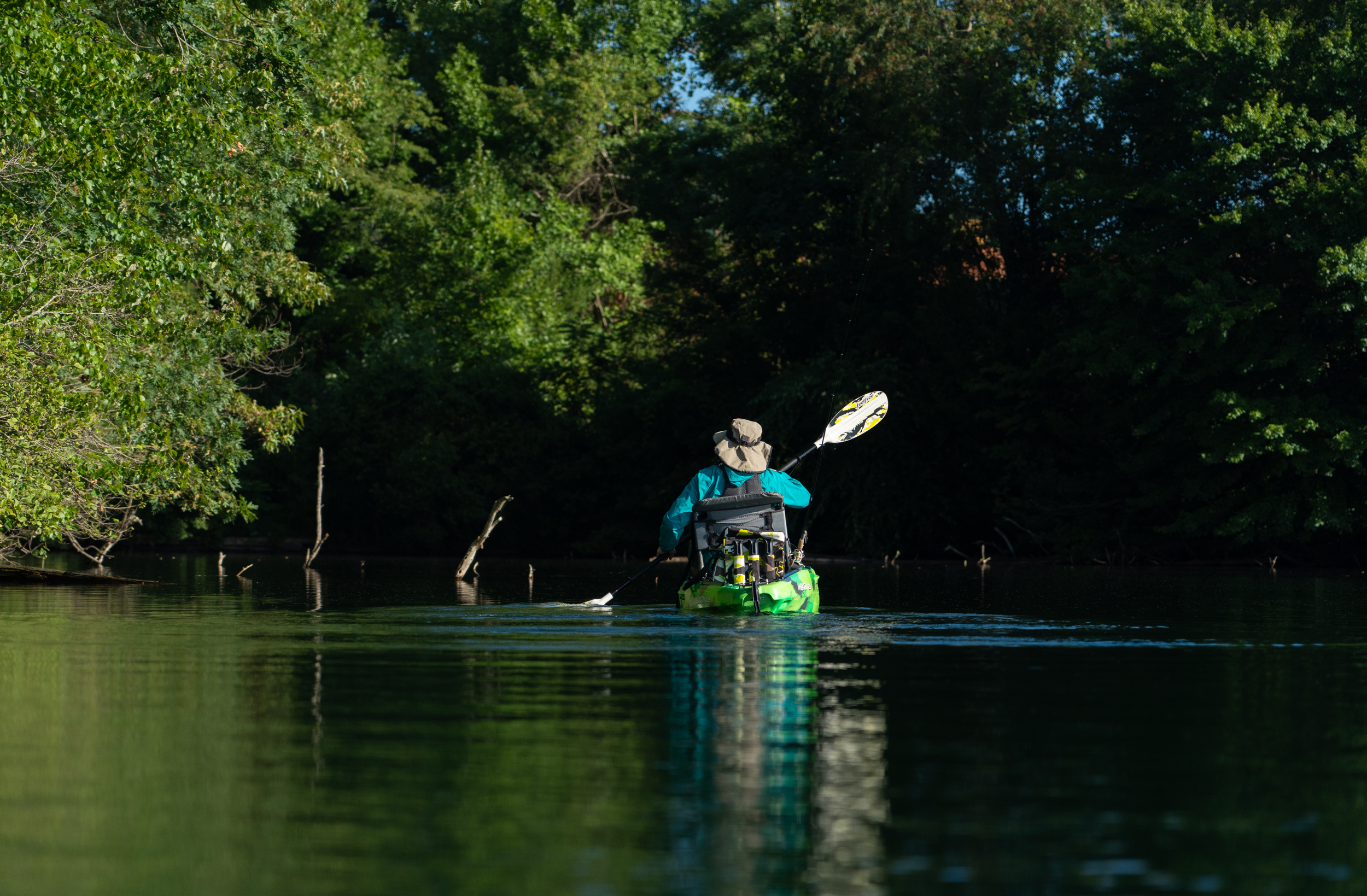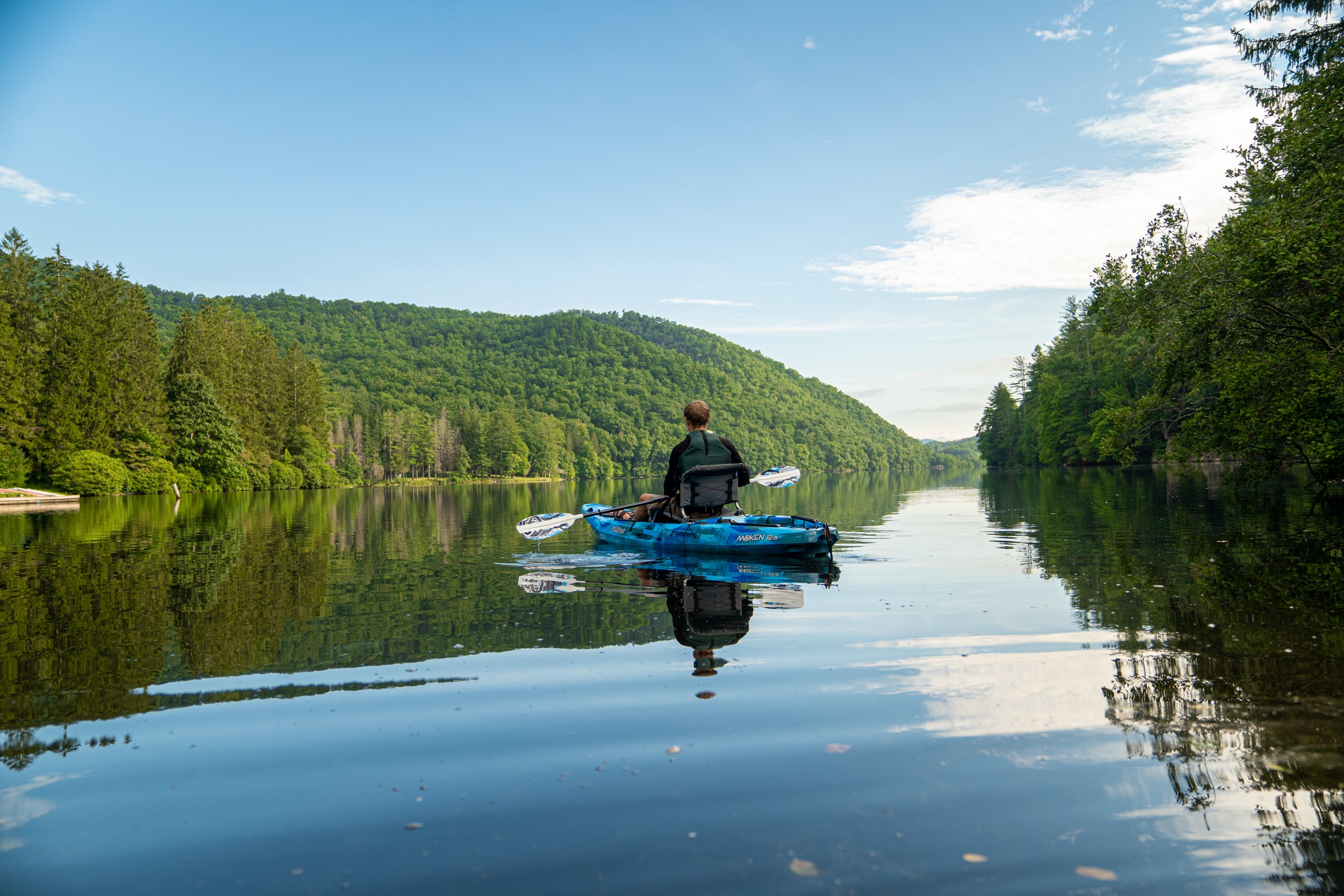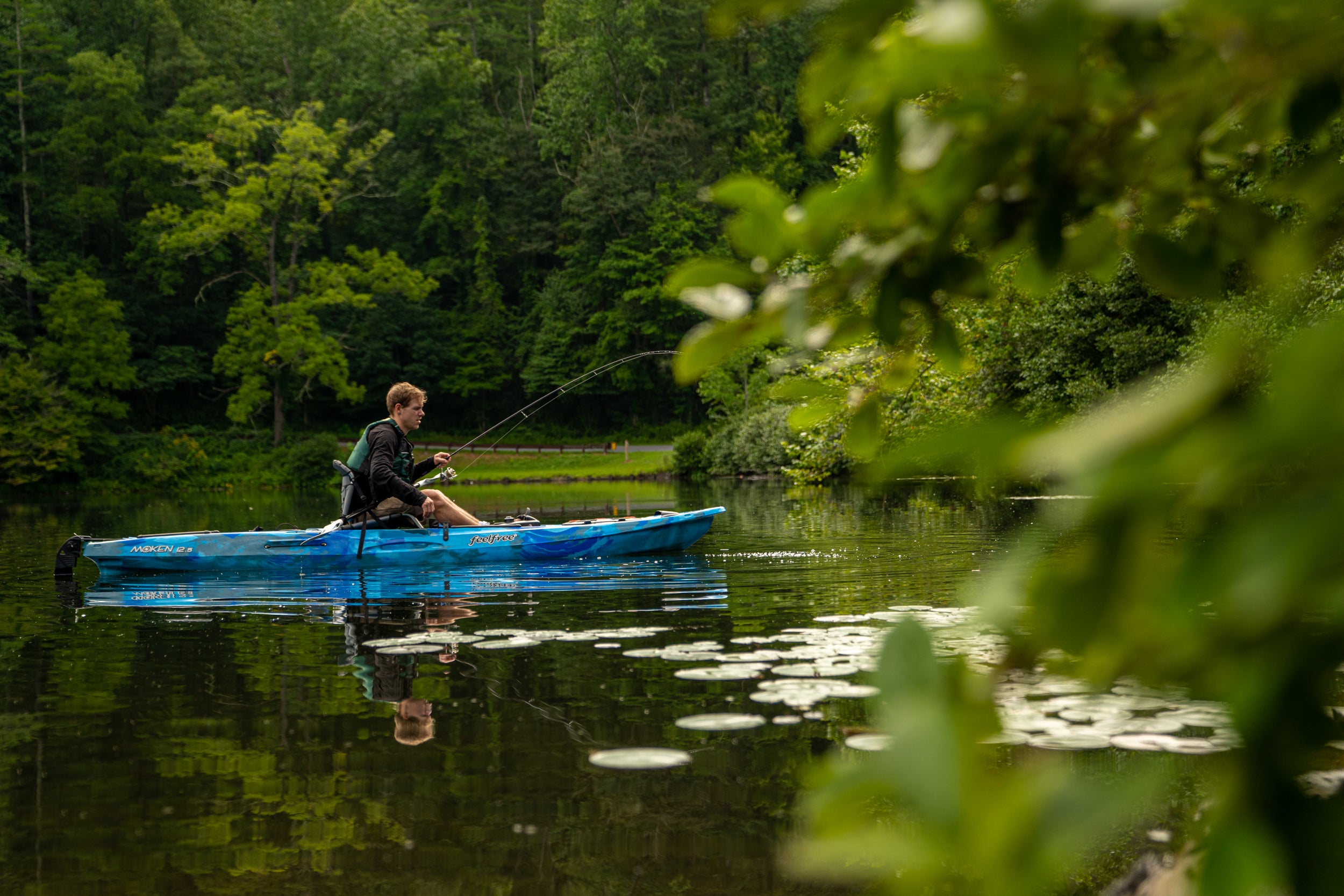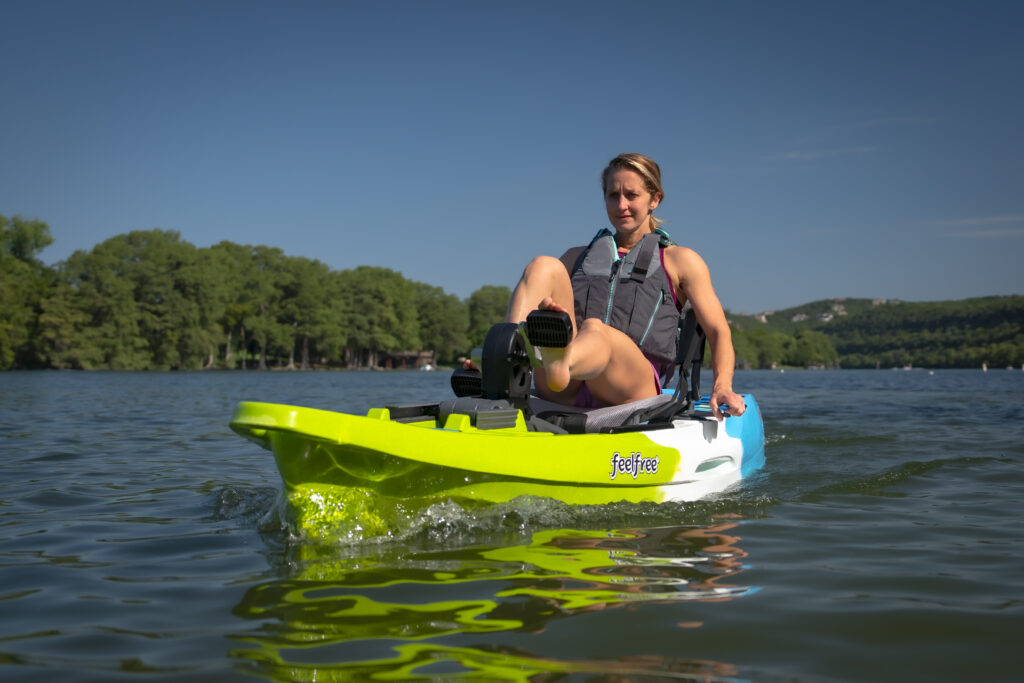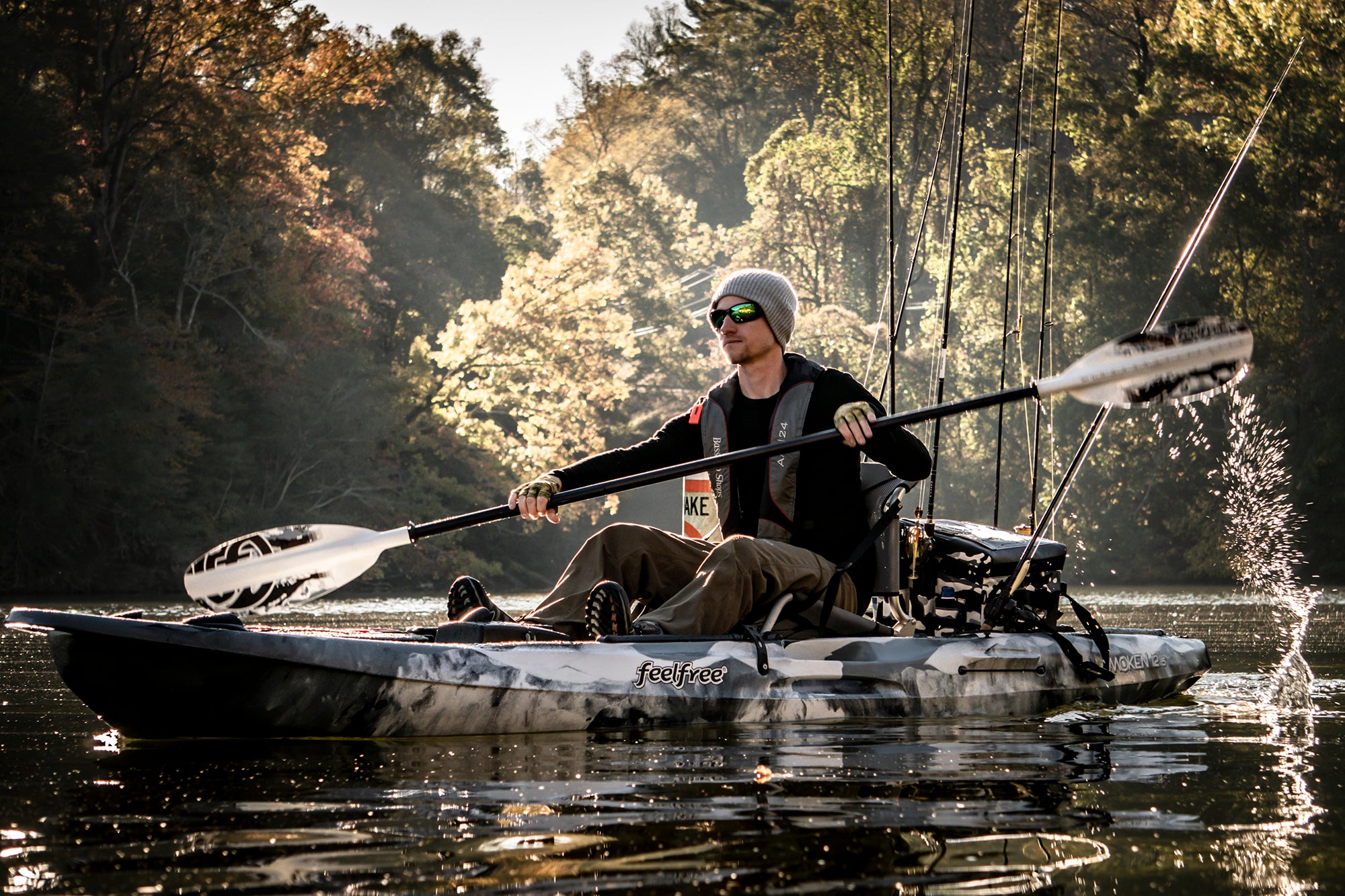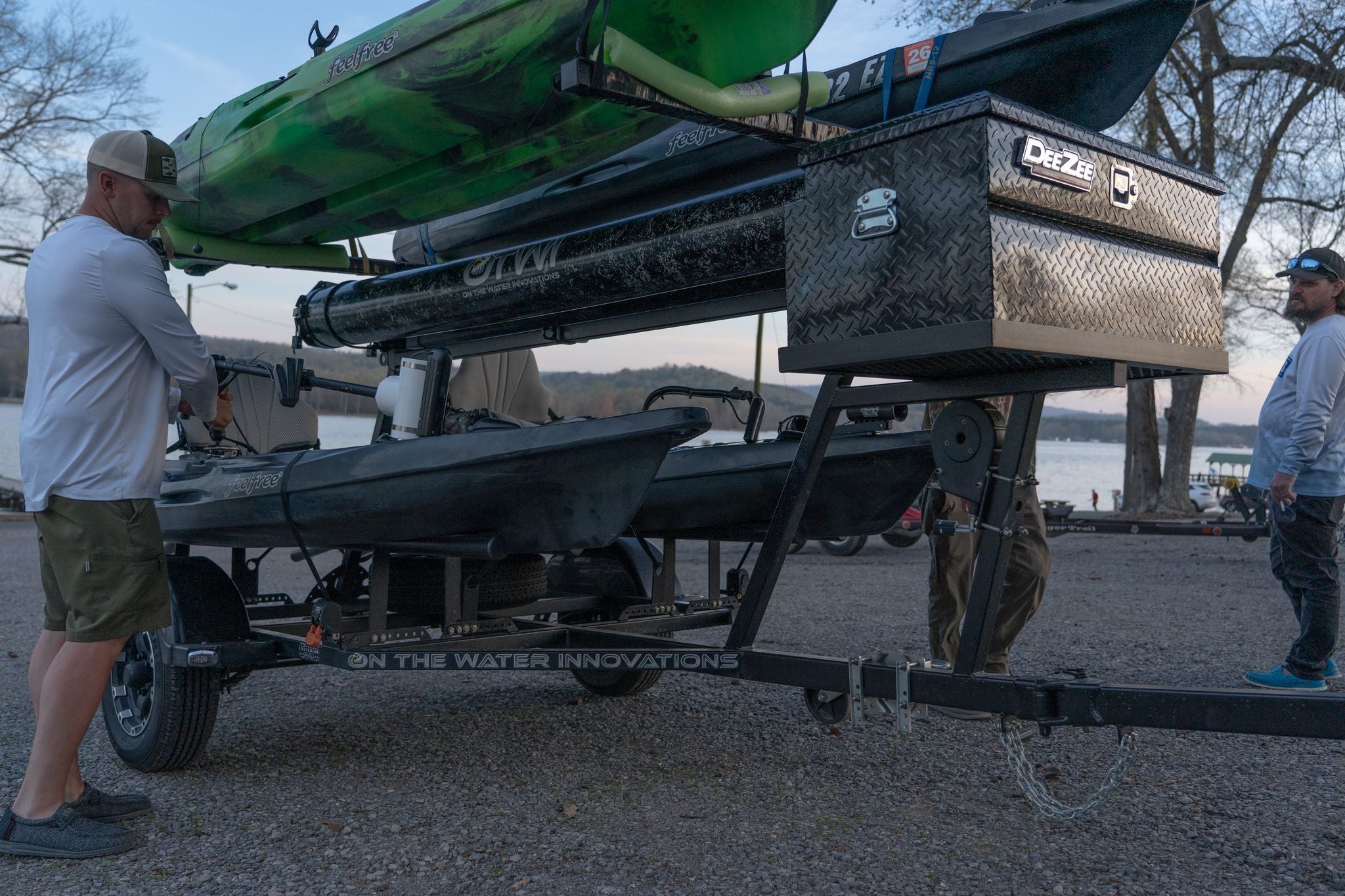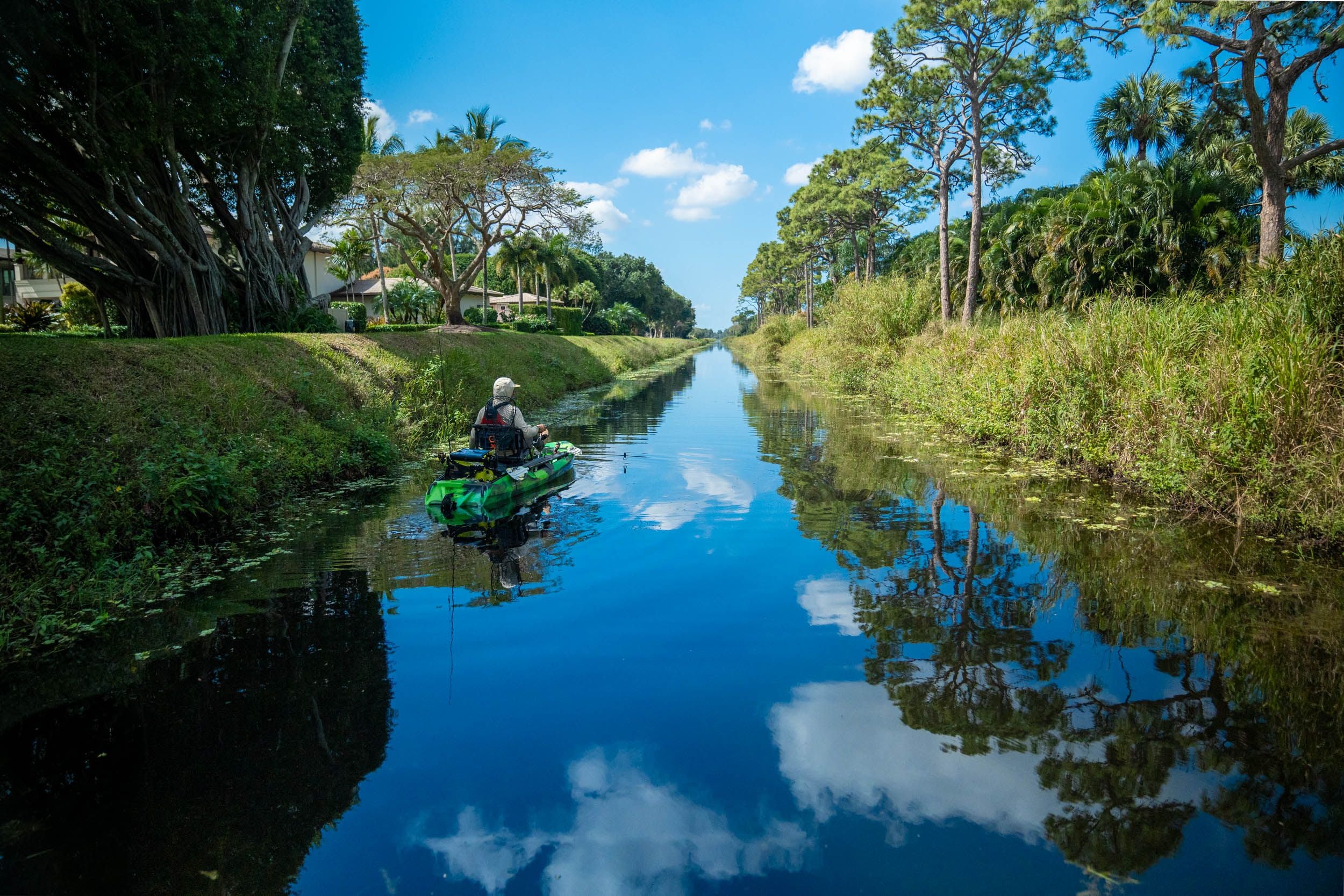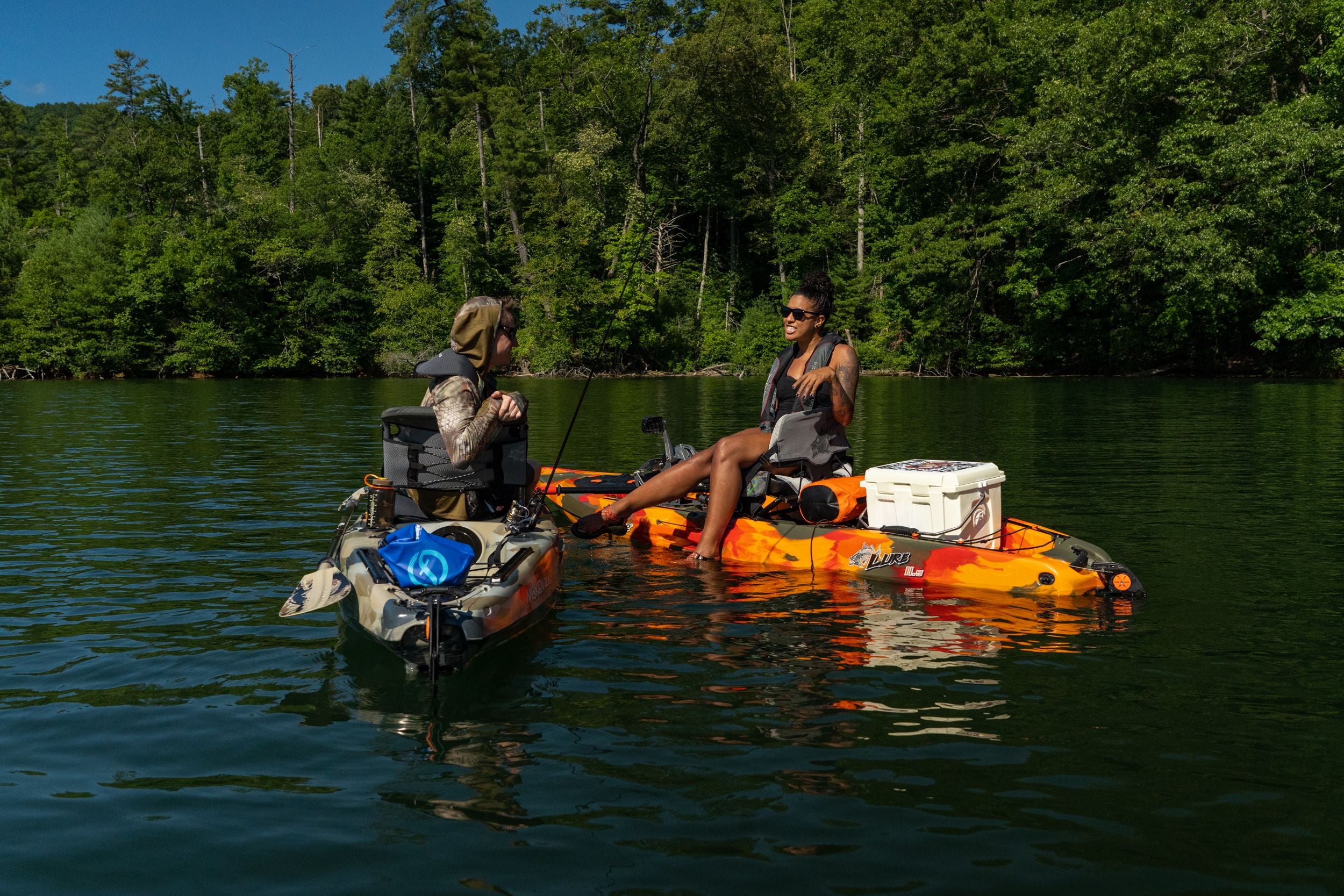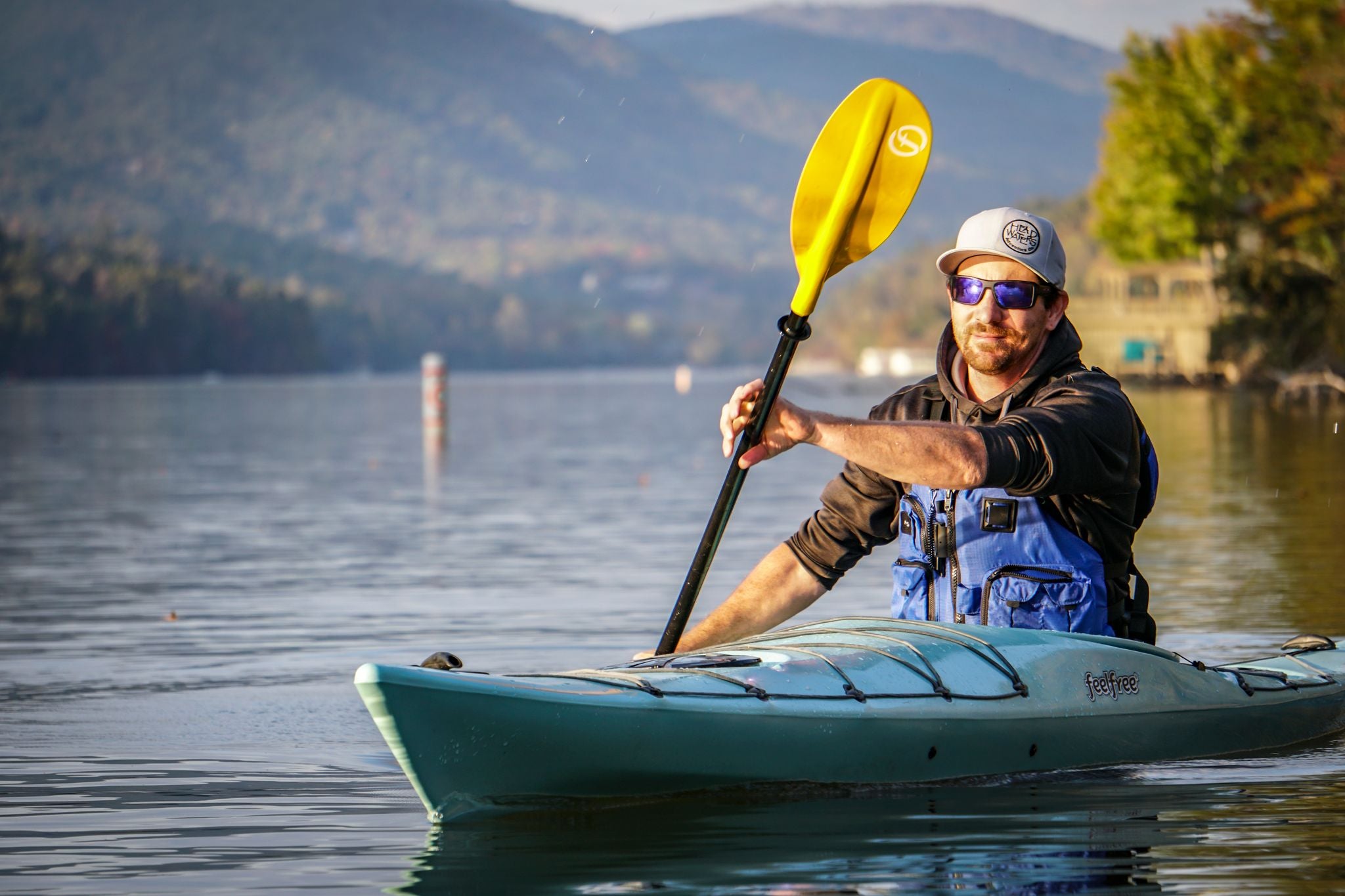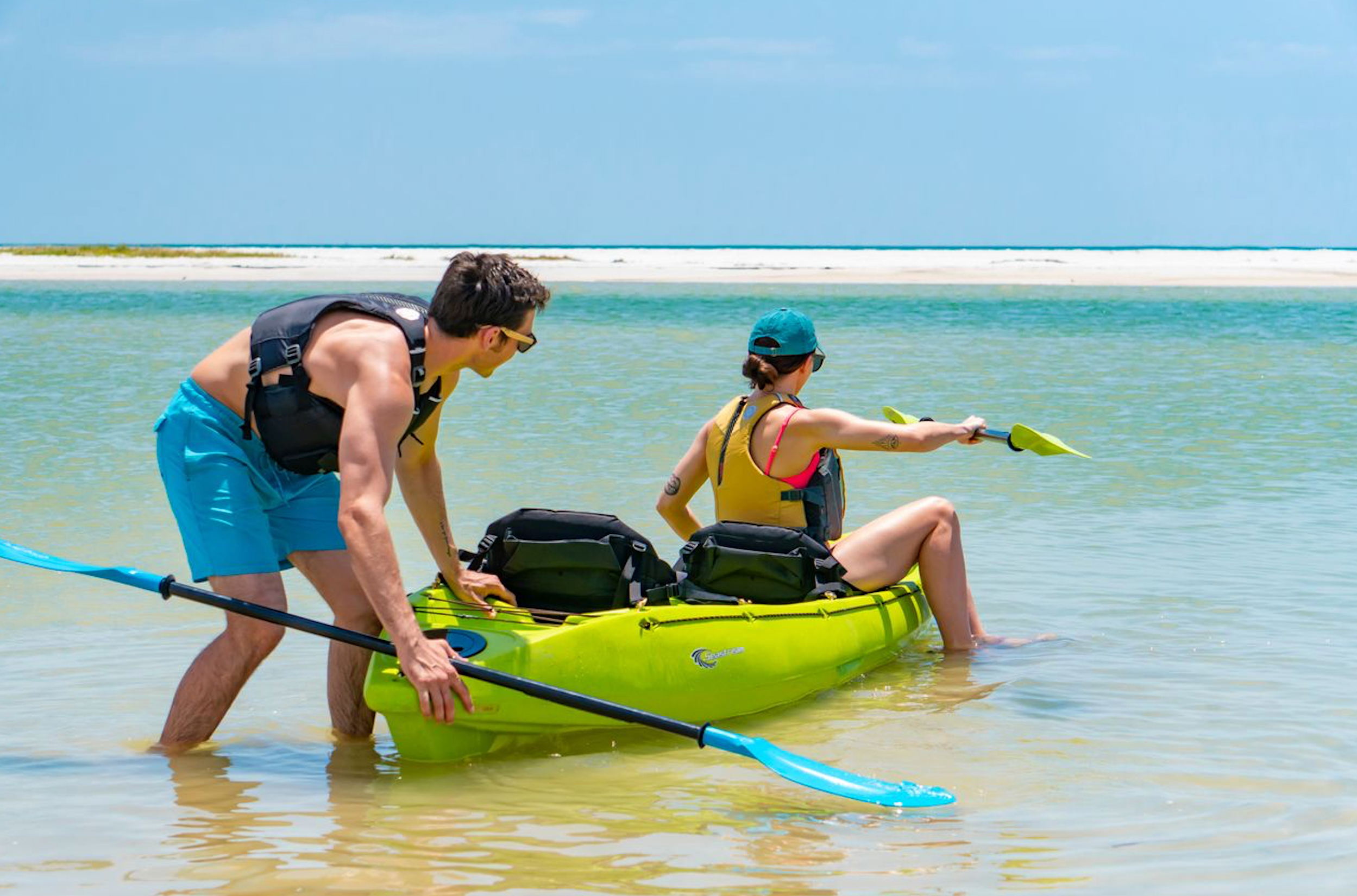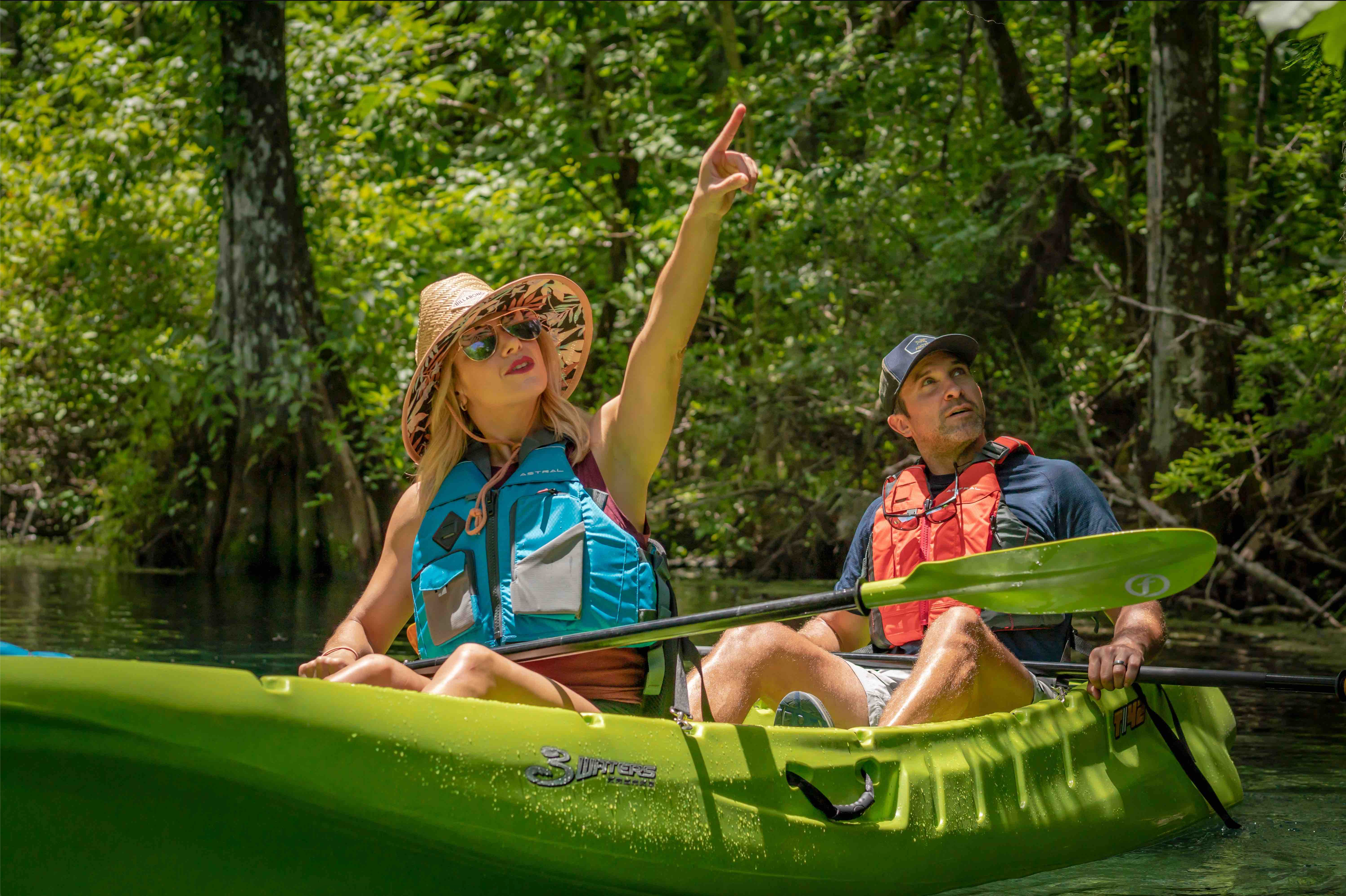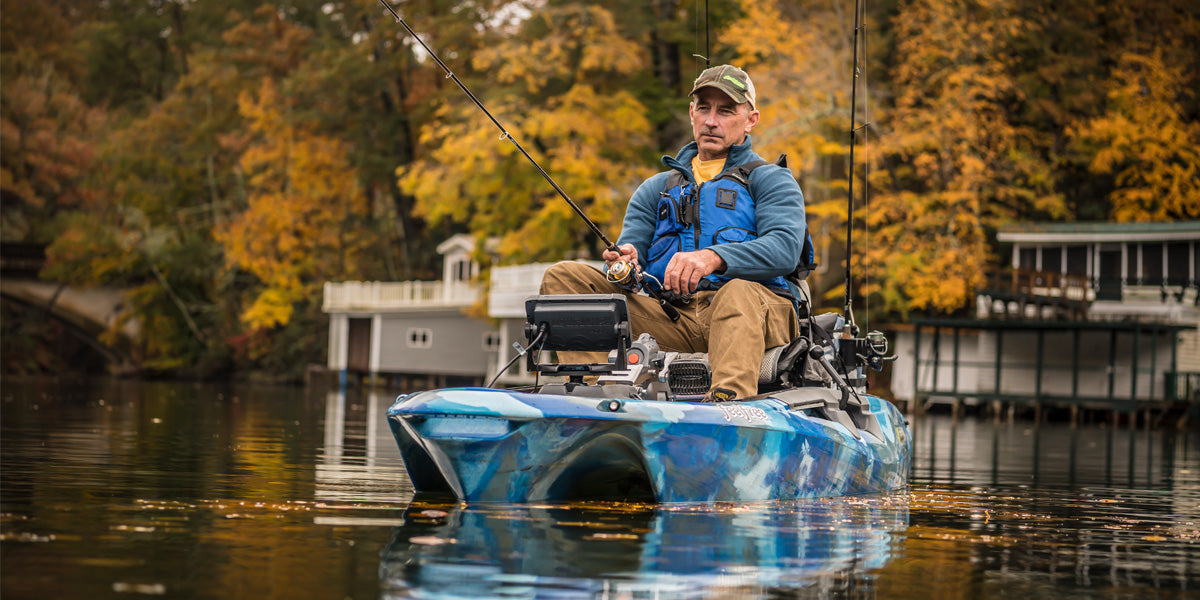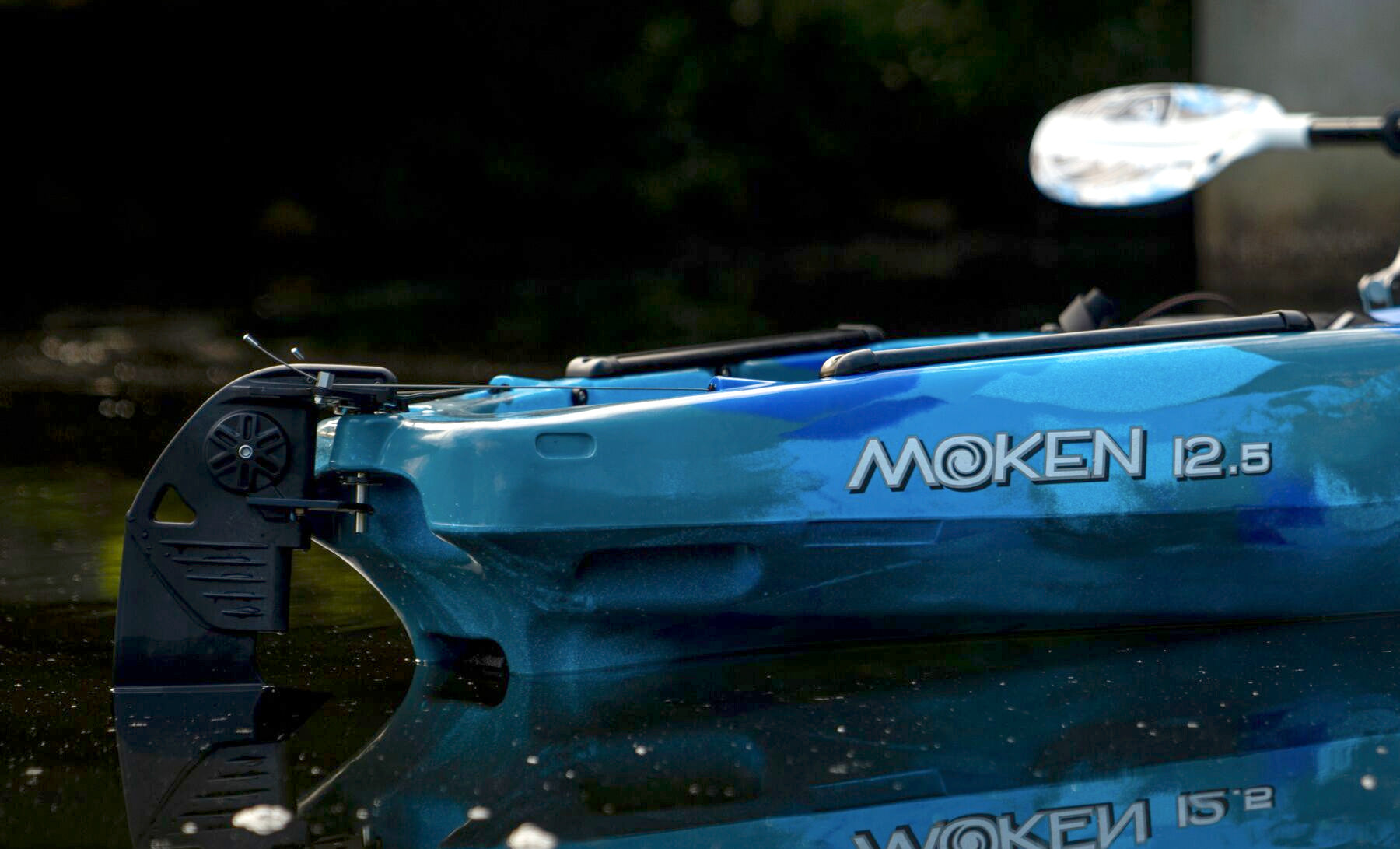
10 Things To Know Before You Buy Your First Kayak
July 23, 2024
Roland Jimenez
Ah yes, the excitement of buying your first kayak suddenly comes to a screeching halt when you realize how complicated it may seem after you Googled “buying my first kayak”. Not to fear, I’ve narrowed some things down to the basics of what you really need to know to get you started. Let’s get right to it...
Consider Your Budget
Sure, you can buy a kayak for $299 but as with anything else in the magical world of materialism, you get what you pay for. Set a budget but give it some wiggle room because you’ll also need to consider other expenses such as taxes if buying local, shipping if ordering online, paddle, PFD (lifevest), dry bag, safety equipment, fishing accessories and something many often forget, transportation gear. If you don’t have a truck with a long bed, a car or SUV with at least some cross bars or a trailer, you’re going to have to consider the added expense, which can sometimes be as much or more than your kayak. Be realistic - assuming you have already have transportation gear in check, for a brand new quality kayak and all of your accessories, you can expect to pay somewhere between $800 - $1200.
Sit-On-Top Vs Sit-Inside Kayaks
You may have heard the term sit-on-top vs sit-inside, simply put, one is a floating deck that you sit on top of while the other is more like a shoe where you insert your legs down to your waist into the cavity of the kayak. I can write an entire article on the advantages of one over the other but for the sake of short reading, I recommend
For a more in-depth breakdown of sit-on-top vs sit-inside kayaks, read our article, Sit-On-Top Vs. Sit-Inside Kayaks
What Size Kayak Do I Need?
To get sized up, you'll need to think about several things including where you typically plan to paddle (lakes, rivers, open bays), for how long, what you will be doing (exploring, fishing, etc.), weight requirements, transportation and storage. I will break this into 3 sections:
- Length: In summary, shorter kayaks (9-10') are great for kids, teens and lighter adults, easier to haul around and store and offer the best maneuverability for smaller waters and streams but may not track as well as longer kayaks. Note: tracking is a kayak’s ability to stay in a straight line while paddling. Shorter kayaks may also be limited in capacity and storage. Mid-range kayaks (11-12 foot) are the best option for the average adult paddler providing a good balance of maneuverability, tracking, capacity and storage and best suited for most waters. Kayaks longer than 12 feet are great for long distance paddling on bigger open waters providing the best tracking, efficient straight line paddling, more capacity and storage space but are inherently going to be heavier and harder to maneuver on the water, transport, and store due to their length.
- Width: While this can vary depending on a kayaks's hull design, in general, the narrower the kayak the faster it will be as it will have an easier time “slicing” through the water but may be less stable. 32”+ width kayaks may be a tad more sluggish also depending on the hull design but will provide the best stability. Some kayaks are designed with fancy pontoon style hulls which provide better stability but may be a bit harder to maneuver. For general recreational and fishing purposes, I would stick to the 30-32” range but if you need additional capacity, have a desire to stand often to paddle or cast your fishing line, push it to 32”-34”.
- Capacity: Keep in mind advertised capacity includes you and all your gear on calm waters with mild weather. If the capacity of a kayak is 350lbs and you weigh 250lbs, you don’t have much room for gear and wiggle room for undesirable conditions. A cooler with food, drinks and ice combined with your tackle and all of your electronic devices can quickly add up. I suggest you take your weight, add 10lbs for clothes, hat, glasses and shoes and another 50lbs for all your gear, especially if you are fishing, and leave an absolute minimum of 50lbs of wiggle room. Example for a person that weighs 200lbs: Capacity 350lbs less your weight of 200lbs + 60lbs leaves you with about 90lbs of wiggle room.
What Are Kayaks Made Out Of?
Most kayaks are made of plastic because it is durable, somewhat easier to repair, if you know what you are doing, and is the most cost effective. Some kayaks are made of composite materials such as fiberglass which has some advantages but tends to be more expensive, may damage easier and can be a bit more difficult to repair. If general recreation and fishing is your thing, just stick to plastic.
Get A Comfortable Kayak Seat
In years past, almost all kayaks came with a black foam padded seat that would lay in the cockpit area. These days you’ll find that more kayaks are coming standard with suspended “lawn chair” style seats that are adjustable with high back support, which are more comfortable and will keep you dry. Try to find a kayak that offers this type of seat even if this is your first kayak, you'll appreciate it.

Feelfree Kayaks Gravity Seat is one of the most comfortable seats available. This seat comes standard on Lure and Dorado Series kayaks
How To Choose The Right Kayak Paddle
This is a question that comes up often and can get pretty technical based on your height, arm length, kayak width and sitting position. We always recommend you visit your local dealer to size you up correctly but if you are ordering online, a good rule of thumb is if you are between 5’-6’ tall and your kayak is about 32” wide you can’t go wrong with a 240”cm length paddle. If you are paddling a kayak that is less than 32” and you are less than 6’ tall a 230cm paddle will be fine. Regardless, you'll find plenty of resources out there that will help you find the right paddle length based on your specifics. In terms of style and materials, it can get overwhelming with paddles made of carbon fiber that can cost as much as your kayak with different blade styles and adjustable lengths. For beginners, we recommend you get a standard recreational paddle made of fiberglass combined with a nylon plastic blade.
Fishing Kayaks
What does it take to turn a kayak into a fishing kayak? Not much really, your fishing gear, a rod holder and a desire to fish. A rod holder is an accessory you mount on or into your kayak that keeps your rod securely in place. Many kayaks these days already come with a couple of flush mounted rod holders but a few other things to consider are a cooler to keep your fish fresh (if you plan to keep them), a set of fish grips, an anchor to keep your kayak positioned in windy conditions and a storage crate or bag for your tackle. Hundreds of kayak fishing accessories exist but take it easy your first time out, keep it simple with a few essential items and eventually customize your rig based on your needs and fishing style.

The Angler 120 PD was designed for fishing, making it easy to hit the water with everything you need.
Kayak Safety
Kayaking is one of the safest sports out there but it’s up to you to keep it that way. In most states, it is law for you to have a PFD and whistle with you at all times but it only helps if you actually wear it! Other things to consider are a deck mounted visibility flag combined with a 360 light if you plan to paddle at dawn, dusk or at night, an emergency dry bag with extra clothes, a first aid kit and an emergency beacon device or your cell phone. It’s also a good idea to always have an easily accessible knife with protected sheath attached to your PFD or in a pocket. And finally, regardless of what time of year it is, make sure you bring plenty of water with you, plenty of snacks and sunscreen.
Storing Gear On Your Kayak
Most kayaks have internal and external storage. Internal storage, usually accessible through a locking or rubber hatch is great for items you don’t need to access often such as your emergency kit mentioned above. External storage, usually on the bow or stern area fitted with some bungee cords is best suited for your fishing tackle, cooler and other items you may need to access quickly and often. Regardless of how you store your gear, we recommend you utilize dry bags to keep your valuables dry and a crate bag for organization if you plan to fish.

Oval Hatch for storing gear internally

Bungee cords for storing gear externally
Kayak Maintenence
Kayaks are highly durable and with proper care will last for decades. Keep them stored in shaded areas, preferably indoors with the hull up or on its side. Make sure you rinse thoroughly after each use and make ensure the inside of the hull is dry before you store it. Once dry, close any openings, you don’t want critters hanging out inside your kayak!
Of course, as with any sport, the options out there are unlimited. You'll find kayaks with pedals and motors, others designed for specialty activities such as sea or whitewater kayaking and even some with advanced electronic systems. Check out this article regarding the advantages of using a pedal kayak. You'll also come across references to rudders. A rudder is an optional kayak accessory designed to help you control the direction of your kayak.
Keep it simple, enjoy paddling in its truest form and as time goes on, you'll discover how far you need to go.
